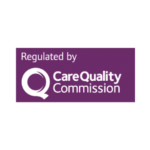
Mental Health Disorders
Mental health conditions, such as depression or anxiety, profoundly impact our thoughts, emotions, and actions. With over 200 distinct forms, these disorders can be effectively addressed through treatment, including medications, psychotherapy, alternative therapies, or brain stimulation therapy.
Defining Mental Health and its Significance
Behavioral health, often referred to as mental health, encompasses an individual's psychological, emotional, and social well-being. It plays a pivotal role in shaping thoughts, emotions, behavior, and interpersonal interactions, influencing how effectively one handles stress from early childhood to adulthood.
Defining Mental Health Disorders
Mental (behavioral) health disorders, also known as mental illnesses, impact thought processes and behavior, altering mood and potentially hindering daily life. It's crucial to understand that facing mental health challenges doesn't necessarily equate to having a behavioral health disorder. Similarly, one can grapple with a behavioral health disorder and still experience extended periods of positive mental well-being.

Common Types of Mental Health Disorders
There are more than 200 types of mental health disorders, and each individual's experience may vary.
SU/edit?usp=sharing">Depression Explore major depressive disorder, characterized by persistent sadness, changes in sleep and appetite, and a loss of interest in once-enjoyable activities.
Key Facts: Depression is a prevalent condition with various treatment options available.
Symptoms: Persistent sadness, changes in sleep and appetite, loss of interest in once-enjoyable activities.
Causes: Genetic predisposition, chemical imbalances, environmental factors, life events.
Key Facts: Depression is a prevalent condition with various treatment options available.
Symptoms: Persistent sadness, changes in sleep and appetite, loss of interest in once-enjoyable activities.
Causes: Genetic predisposition, chemical imbalances, environmental factors, life events.
Unpack generalized anxiety disorder (GAD), social anxiety, panic disorder, and more.
Key Facts: Anxiety disorders go beyond everyday worries, impacting daily life and well-being.
Symptoms: Excessive worry, restlessness, fatigue, muscle tension, difficulty concentrating.
Causes: Genetics, brain chemistry, environmental stressors, traumatic experiences.
Bipolar Disorder
Delve into the highs and lows of bipolar disorder, characterized by extreme mood swings.
Key Facts: Effective treatment is available to manage bipolar disorder.
Symptoms: Manic episodes (elevated mood, increased energy), depressive episodes (low mood, fatigue, changes in sleep and appetite).
Causes: Genetic factors, brain structure and function, environmental triggers.
Key Facts: Effective treatment is available to manage bipolar disorder.
Symptoms: Manic episodes (elevated mood, increased energy), depressive episodes (low mood, fatigue, changes in sleep and appetite).
Causes: Genetic factors, brain structure and function, environmental triggers.
Schizophrenia
Navigate the complexities of schizophrenia, a chronic disorder affecting a person's perception of reality.
Key Facts: Challenge stereotypes surrounding schizophrenia and promote a nuanced understanding.
Symptoms: Delusions, hallucinations, disorganized thinking, reduced emotional expression, social withdrawal.
Causes: Genetic predisposition, brain structure abnormalities, environmental factors.
Key Facts: Challenge stereotypes surrounding schizophrenia and promote a nuanced understanding.
Symptoms: Delusions, hallucinations, disorganized thinking, reduced emotional expression, social withdrawal.
Causes: Genetic predisposition, brain structure abnormalities, environmental factors.
Obsessive-Compulsive Disorder (OCD)
Uncover the intricate patterns of OCD, marked by unwanted thoughts and repetitive behaviors.
Key Facts: Break down the stigma associated with OCD and emphasize the importance of seeking help.
Symptoms: Obsessions (intrusive thoughts), compulsions (repetitive behaviors or mental acts), anxiety.
Causes: Genetic factors, differences in brain structure and function, environmental stressors.
Post-Traumatic Stress Disorder (PTSD)
Understand PTSD, a condition that can develop after exposure to a traumatic event.
Key Facts: Recognize the impact of trauma and the importance of trauma-informed care.
Symptoms: Flashbacks, nightmares, severe anxiety, uncontrollable thoughts about the traumatic event.
Causes: Exposure to trauma, genetic factors, brain changes, lack of a strong support system.
Attention-Deficit/Hyperactivity Disorder (ADHD)
Explore ADHD, a neurodevelopmental disorder characterized by inattention, hyperactivity, and impulsivity.
Key Facts: Early diagnosis and management strategies are crucial for individuals with ADHD.
Symptoms: Inattention, hyperactivity, impulsivity.
Causes: Genetics, brain structure and function, environmental factors, premature birth.
Eating Disorders (e.g., Anorexia, Bulimia, Binge Eating Disorder)
Examine various eating disorders and their impact on physical and mental health.
Key Facts: Challenge societal pressures related to body image and promote a healthy relationship with food.
Symptoms: Extreme weight loss or gain, distorted body image, preoccupation with food and weight.
Causes: Genetic factors, societal pressures, trauma, perfectionism.
Borderline Personality Disorder (BPD)
Dive into BPD, a condition characterized by difficulties in regulating emotions and self-image.
Key Facts: Explore the complexities of BPD and the importance of empathy in supporting individuals.
Symptoms: Intense fear of abandonment, unstable relationships, self-image issues, impulsive behavior.
Causes: Genetic predisposition, environmental factors (childhood trauma, invalidating environment).
Substance Use Disorders
Address substance use disorders, which involve the harmful use of substances, including drugs and alcohol.
Key Facts: Understand the impact of substance use on mental health and well-being.
Symptoms: Continued use despite negative consequences, loss of control, withdrawal symptoms.
Causes: Genetic susceptibility, environmental factors (stress, trauma), mental health issues.
Autism Spectrum Disorder (ASD)
Explore ASD, a developmental disorder characterized by challenges in social interaction and communication.
Key Facts: Embrace neurodiversity and promote inclusivity for individuals with ASD.
Symptoms: Challenges in social interaction, communication difficulties, repetitive behaviors, limited interests.
Causes: Genetic factors, neurological differences, environmental influences, prenatal complications.
Dissociative Disorders (e.g., Dissociative Identity Disorder)
Understand dissociative disorders, where a person experiences a disconnection between thoughts, identity, and consciousness.
Key Facts: Highlight the need for specialized care for individuals with dissociative disorders.
Symptoms: Disconnection between thoughts, identity, and consciousness, memory gaps, identity shifts.
Causes: Severe trauma or stress during childhood, coping mechanism to deal with trauma.
Personality Disorders (e.g., Antisocial Personality Disorder)
Examine personality disorders and their impact on interpersonal relationships and functioning.
Key Facts: Encourage a nuanced understanding of individuals with personality disorders.
Symptoms: Difficulty forming close relationships, impulsive behavior, lack of empathy, manipulative tendencies.
Causes: Genetic factors, environmental factors (childhood trauma, unstable family environment).
Seasonal Affective Disorder (SAD)
Explore SAD, a type of depression that occurs seasonally, often in the winter months.
Key Facts: Recognize the impact of seasonal changes on mental health and well-being.
Symptoms: Depressive symptoms occurring seasonally, often in winter, changes in sleep and appetite.
Causes: Reduced sunlight exposure, disrupted circadian rhythm, genetic factors.
Insomnia and Other Sleep Disorders
Address sleep disorders and their connection to mental health, emphasizing the importance of good sleep hygiene.
Key Facts: Understand the bidirectional relationship between sleep and mental well-being.
Symptoms: Difficulty falling or staying asleep, daytime fatigue, irritability.
Causes: Stress, anxiety, medical conditions, poor sleep hygiene, lifestyle factors.
Key Facts: Break down the stigma associated with OCD and emphasize the importance of seeking help.
Symptoms: Obsessions (intrusive thoughts), compulsions (repetitive behaviors or mental acts), anxiety.
Causes: Genetic factors, differences in brain structure and function, environmental stressors.
Key Facts: Recognize the impact of trauma and the importance of trauma-informed care.
Symptoms: Flashbacks, nightmares, severe anxiety, uncontrollable thoughts about the traumatic event.
Causes: Exposure to trauma, genetic factors, brain changes, lack of a strong support system.
Key Facts: Early diagnosis and management strategies are crucial for individuals with ADHD.
Symptoms: Inattention, hyperactivity, impulsivity.
Causes: Genetics, brain structure and function, environmental factors, premature birth.
Key Facts: Challenge societal pressures related to body image and promote a healthy relationship with food.
Symptoms: Extreme weight loss or gain, distorted body image, preoccupation with food and weight.
Causes: Genetic factors, societal pressures, trauma, perfectionism.
Key Facts: Explore the complexities of BPD and the importance of empathy in supporting individuals.
Symptoms: Intense fear of abandonment, unstable relationships, self-image issues, impulsive behavior.
Causes: Genetic predisposition, environmental factors (childhood trauma, invalidating environment).
Key Facts: Understand the impact of substance use on mental health and well-being.
Symptoms: Continued use despite negative consequences, loss of control, withdrawal symptoms.
Causes: Genetic susceptibility, environmental factors (stress, trauma), mental health issues.
Key Facts: Embrace neurodiversity and promote inclusivity for individuals with ASD.
Symptoms: Challenges in social interaction, communication difficulties, repetitive behaviors, limited interests.
Causes: Genetic factors, neurological differences, environmental influences, prenatal complications.
Key Facts: Highlight the need for specialized care for individuals with dissociative disorders.
Symptoms: Disconnection between thoughts, identity, and consciousness, memory gaps, identity shifts.
Causes: Severe trauma or stress during childhood, coping mechanism to deal with trauma.
Key Facts: Encourage a nuanced understanding of individuals with personality disorders.
Symptoms: Difficulty forming close relationships, impulsive behavior, lack of empathy, manipulative tendencies.
Causes: Genetic factors, environmental factors (childhood trauma, unstable family environment).
Key Facts: Recognize the impact of seasonal changes on mental health and well-being.
Symptoms: Depressive symptoms occurring seasonally, often in winter, changes in sleep and appetite.
Causes: Reduced sunlight exposure, disrupted circadian rhythm, genetic factors.
Key Facts: Understand the bidirectional relationship between sleep and mental well-being.
Symptoms: Difficulty falling or staying asleep, daytime fatigue, irritability.
Causes: Stress, anxiety, medical conditions, poor sleep hygiene, lifestyle factors.
Who Gets Mental Health Disorders?
Individuals of any age, gender, background, or ethnicity can experience behavioral health disorders. Those designated female at birth (DFAB) often encounter depression, anxiety, and eating disorders, whereas individuals designated male at birth (DMAB) are more prone to substance abuse and antisocial personality disorders. Adolescents are more commonly affected by behavioral problems and ADHD.

Do Mental Health Disorders Commonly Happen?
Behavioral health disorders are widespread and can affect a significant portion of the population. According to various studies, a substantial number of individuals worldwide experience behavioral health disorders at some point in their lives. The prevalence varies among different disorders, with conditions such as anxiety and depression being particularly common. It’s important to note that the frequency of these disorders can be influenced by factors such as age, gender, and cultural background. Seeking professional help and fostering awareness are crucial steps in addressing the impact of behavioral health disorders on individuals and communities.
How are Mental Health Disorders Identified?
Obtaining a diagnosis from a healthcare professional specializing in behavioral health disorders is crucial for receiving appropriate treatment. Your accurate diagnosis is key to determining the most effective course of action.
Your healthcare provider will meticulously assess your symptoms to gauge your mental health. When discussing your condition, make sure to inform your healthcare provider of:
Specific triggers that exacerbate your mental health.
Whether your mental health challenges are chronic or intermittent.
When you first observed changes in your mental health.
While there aren’t specific medical tests for diagnosing mental illnesses, your healthcare provider may conduct tests like blood work or imaging exams to rule out other conditions affecting mental health.
How are Mental Health Disorders Addressed?
Treatment for mental health disorders may involve:
Medication: Certain mental illnesses respond well to medications like antidepressants and antipsychotics, altering brain chemistry to alleviate symptoms. Adherence to prescribed medication is crucial, and discontinuation should only occur under the guidance of your healthcare provider.
Psychotherapy: Engaging with a mental health professional facilitates working through challenges and symptom management. Psychotherapy can be individual or group-based, with cognitive-behavioral therapy (CBT) as a notable approach, focusing on modifying negative behaviors and thought patterns.
Alternative Therapies: Conditions like depression may benefit from alternative therapies such as herbal remedies, massage, acupuncture, yoga, and meditation. Prior consultation with your healthcare provider is essential, especially if considering herbal remedies alongside other medications.
Brain Stimulation Therapies: In cases where medication alone is insufficient, brain stimulation therapies like electroconvulsive therapy and transcranial magnetic stimulation may be recommended, altering brain processes and responses to stimuli.
Can Behavioral Health Disorders be Prevented?
Unfortunately, there’s no sure way to prevent behavioral health disorders, but symptom management is achievable with professional support. Seeking help at the first signs of a problem is vital.
When Should I Reach Out to My Doctor?
Seek immediate help if you experience suicidal thoughts or observe such behavior in others. Treatment is available, beginning with an accurate diagnosis. Consult your healthcare provider if signs or symptoms are present for you or your child.
Prognosis for Individuals with Behavioral Health Disorders
The prognosis for those dealing with behavioral health disorders varies, but with proper diagnosis and treatment, many can lead fulfilling lives. Early intervention, strong support networks, and treatment adherence are key influencers. Regular communication with healthcare providers is crucial for monitoring progress. Seeking help, active engagement in treatment, and open communication optimize the prognosis. In this context, Isabella’s Homes provides supported living services with a mission to guide individuals with pre-existing conditions toward independence. Our focus extends beyond traditional treatment, emphasizing holistic well-being and community support.
In conclusion, fostering awareness about mental health disorders is a critical step toward building a supportive and compassionate community. By understanding the complexities of these conditions, we empower ourselves and others to break the stigma surrounding mental health. Remember, each individual’s journey is unique, and seeking help is a sign of strength.
As we conclude, let’s continue the conversation. Share this information with your friends, family, and colleagues to contribute to a more informed and empathetic society. If you or someone you know is struggling, reach out to mental health professionals or support organizations. Together, we can create a world where mental well-being is prioritized, and everyone has the support they need to thrive.
If you found this information valuable, spread the word! Share this blog on your social media platforms and encourage open conversations about mental health. Your voice matters, and together, we can make a positive impact.

















